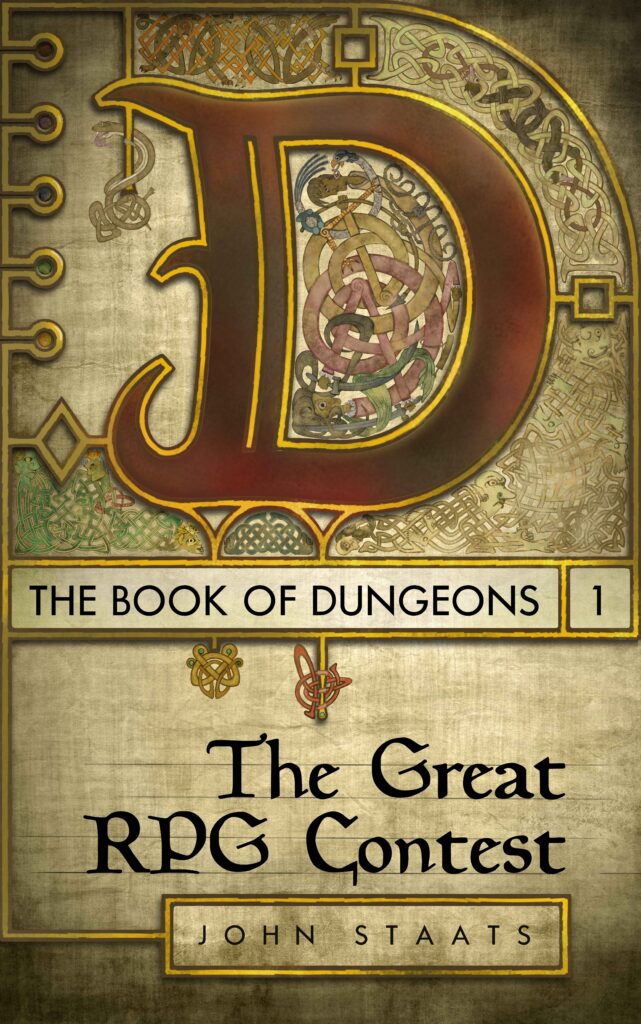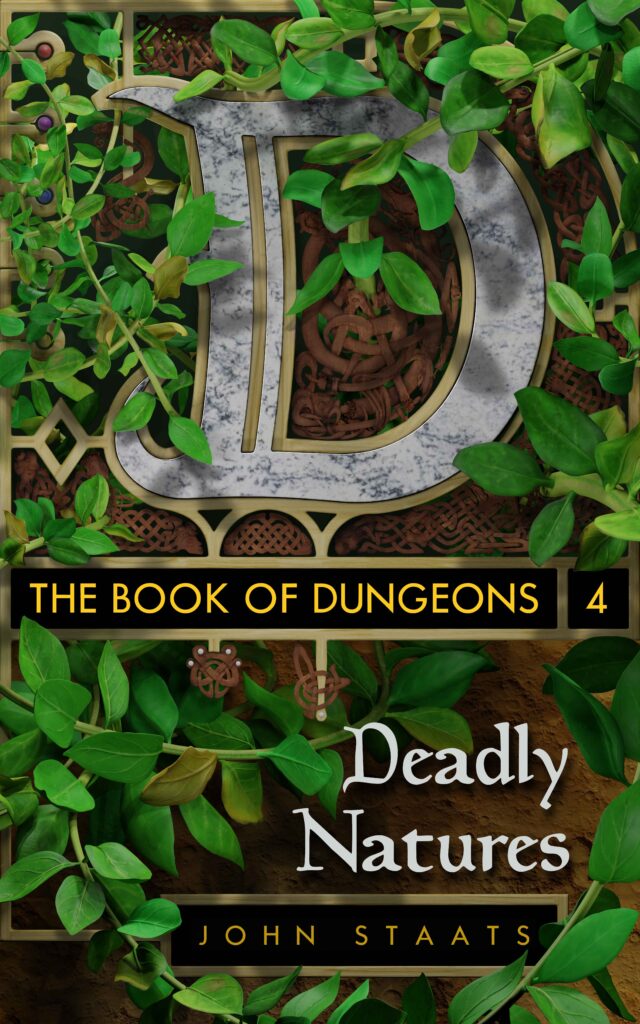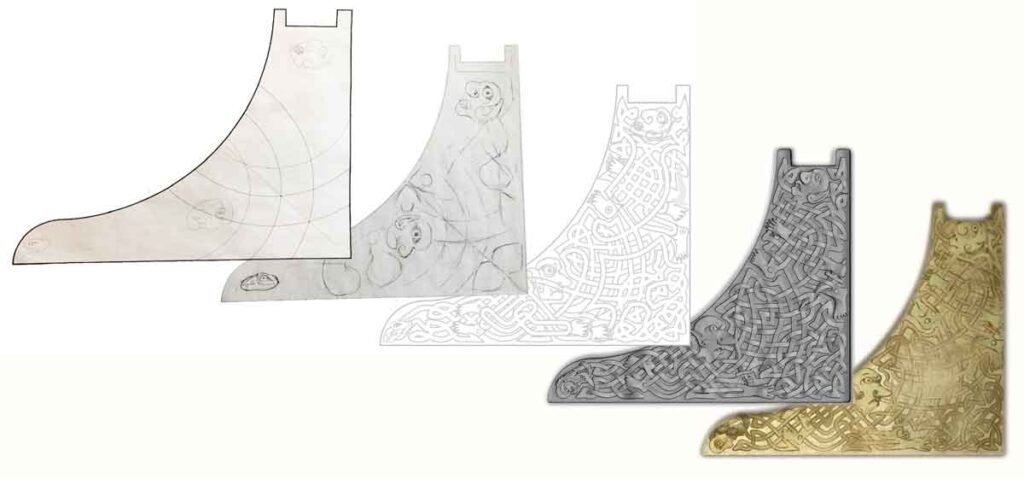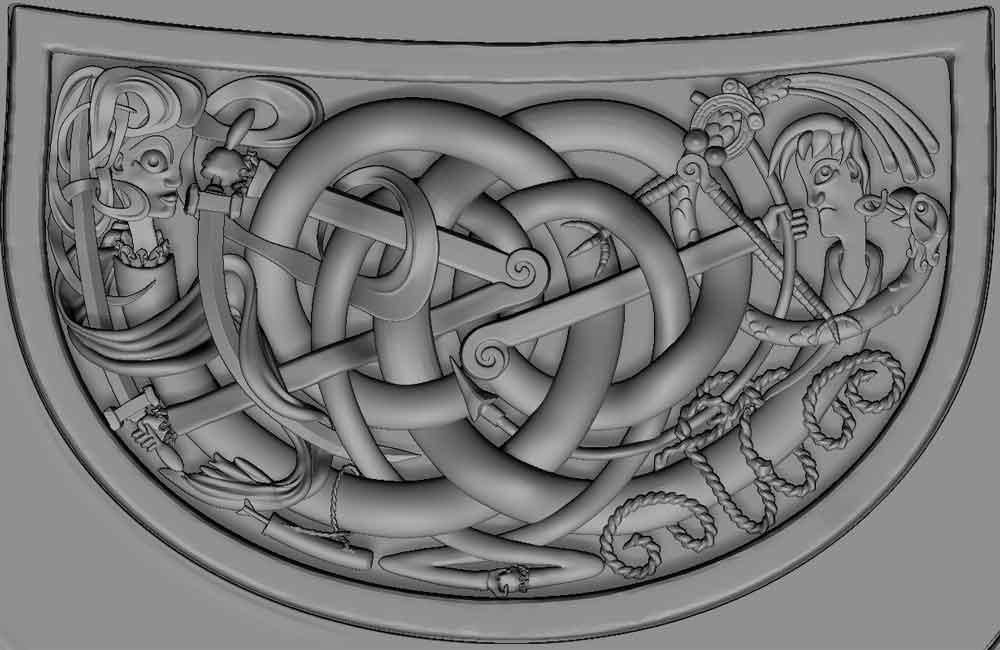I finished my book covers! It took a month to build the 3D mesh of my basic layout, a week to paint the first book, and another month to render six variations. The grand total of time was around nine months. This is utterly unacceptable by most commercial standards, but with self-publishing, it’s par for the course. Blizzard self-publishes their products, and they invested a little more time on the box art for Warcraft III. They assigned one of their lead artists, Justin Thavirat, to do high-resolution paint overs of their cinematic stills. It took him over a year to do five variations (including the expansion).
For the entertainment industry, everything is driven by hits, so persnickety levels of polish are a must. Books, movies, and games have to look better than their predecessors, so I’m determined to distance myself from the competition. Most fantasy book publishers proffer illustrations for their cover art. Though they are well painted—publisher follow this formula because it’s cheap, so most fantasy books look the same.
Three decades after leaving Kent State University’s graphic design program, I still feel like a student who doesn’t know what they’re doing. I think that’s healthy. David Bowie warned there was a danger when artists feel confident and secure about their work. He describes the artistic sweet spot is where “your toes are barely touching the bottom.” There’s enough experimental spirit in me to harbor avant-garde ideals. If it flops, I’ll fall back on traditional illustrative covers, but I wanted to gamble on my vision first.

I’ve been staring at this design for so long I was blind to fundamental issues, so I solicited help from an old Blizzard co-work, Matt Milizia. My inner geek wanted to be faithful to the unreadable aesthetic of The Book of Kells, but Matt pointed out the folly of this pursuit. He did a quick paint-over and showed how he would render the cover. It was immensely helpful to have a fresh pair of eyes on the project.
I took the final renders into Photoshop to composite together the painted 3D model with the text and parchment background. It was strange how my earlier attempts at doing everything in illustrator and Photoshop produced failures. I still haven’t figured out why I needed 3D models. The subsequent covers will take advantage of the 3D form. I learned Blender—yet another 3D program—to light and render them. I’m not ready to show them all, so I have something fresh when the books come out, but here’s another cover.


Other News
The past month was fraught with computer breakdowns. I replaced my dead keyboard, an inadequate power supply, an antediluvian video card, and upgraded my system with enough RAM to render my artwork. Even the “on” button broke! I must have hauled my PC to a repair shop half a dozen times in February. My email got hacked, and someone ordered thousands of dollars of electronics using an Amazon credit card I didn’t know existed. Between the scams and hardware issues, I lost half the month to customer service calls and knucklehead problems.
My printer accidentally purged my remaining inventory of The WoW Diary from their warehouse, so I won’t have much of an income in 2022. It will be quite a while, if ever, when I can afford to print another edition, so the only remaining copies are signed, spot-varnished copies I’m keeping in my house. I’m sending them to Amazon.
What’s Next for 2022?
After I implement a round of edits, I’ll write book five. In summer, I’ll release my series as a web novel on sites like royalroad.com, fictionpress.com, and a Patreon to give beta readers convenient access to my work. Together, we’ll correct mistakes, smooth out inconsistencies, and clarify the narrative.
Going live on Patreon means my readers can give feedback, which means I’ll need to allocate time to respond. I’ll support my Patreon with essays about the series and give my readers insight into my creative process. Between maintaining a constant connection with beta readers, editing, and writing the rest of the series, I’m going to be a very busy boy these next few years.

If you want to be a beta reader, shoot an email to staats dot john at gmail dot com and I’ll add you to my list. Until then, I’ll see you at the deep end.
